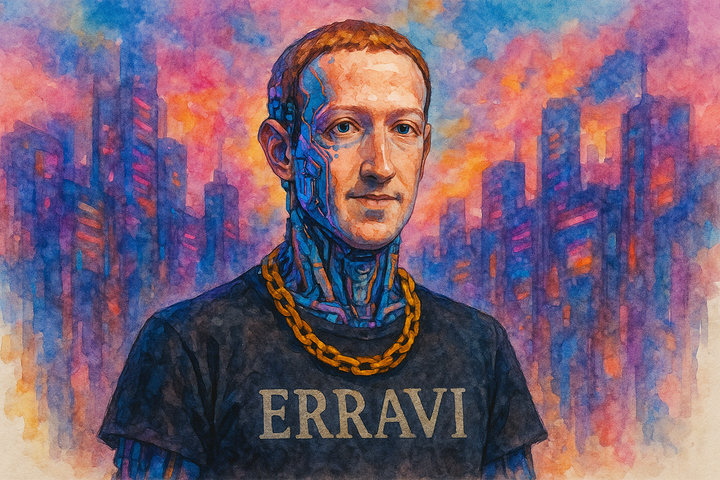Executive AI Intelligence Brief: 5 Key Developments This Week
McKinsey research reveals 99% of companies invest in AI but only 1% reach maturity—creating the biggest competitive opportunity in AI transformation. Here are 5 strategic insights that separate winning leaders from the rest.

The Bottom Line Up Front: While 99% of companies invest in AI, only 1% believe they've reached maturity. This creates the biggest competitive opportunity in AI transformation—but only for leaders who understand what the research actually reveals.
Major research dropped this week that smart executives can use to gain competitive advantage in AI transformation. Here are the five developments that matter most for your strategy, plus what successful leaders are doing about them.
1. The AI Maturity Opportunity: Why 99% of Companies Are Missing the Mark
What Happened: McKinsey's latest workplace AI report reveals that while almost all companies invest in AI, only 1% believe they've reached maturity. Infosys research shows only 2% of firms are ready across all five critical dimensions: strategy, governance, talent, data, and technology.
What This Means for Your Strategy: This isn't a problem—it's your competitive window. While competitors rush to deploy tools, you can build sustainable advantage by addressing the five operational requirements most organizations ignore: leadership alignment, cost planning, workforce development, supply chain integration, and decision explainability.
Your Immediate Action: Conduct a readiness assessment across these five dimensions (strategy, governance, talent, data, and technology) before your next AI investment. Companies that master the operational transformation alongside technology deployment will dominate their markets while others struggle with tool adoption.
Strategic Context: This validates the 18-month inflection point where strategic differentiation becomes permanent competitive advantage.
2. Closing the Leadership-Workforce Reality Gap
What Happened: McKinsey's research reveals a significant disconnect between leadership expectations and workforce reality regarding AI adoption. C-suite executives underestimate employee AI usage, with executives estimating only 4% of employees use AI for 30% of their work, while 13% of employees actually do.
What This Means for Your Strategy: This disconnect creates an opportunity to build employee engagement around AI that competitors miss. Organizations that solve the human adoption challenge will see dramatically better ROI from their AI investments.
Your Immediate Action: Launch an "AI literacy without judgment" program. Create safe spaces for experimentation, celebrate learning over perfection, and position AI as capability enhancement rather than performance evaluation. Early adopters who master human engagement will capture the productivity gains others promise but can't deliver.
Success Pattern: Microsoft's transformation focused on "hero cases" and measured both efficiency gains and employee satisfaction—providing your blueprint for human-centered implementation.
3. Reframing the Productivity Question
What Happened: A comprehensive study of 7,000 workplaces found "no significant impact on earnings or recorded hours" from AI chatbot implementation. The NBER research shows AI users save an average of just 3% of their time.
What This Means for Your Strategy: Companies measuring the wrong metrics are missing the real value. The productivity question isn't "Are people working faster?" but "Are they working on higher-value activities?" Organizations that measure capability enhancement rather than time savings will capture sustainable competitive advantage.
Your Immediate Action: Shift your AI metrics from efficiency (time saved) to effectiveness (decision quality, strategic thinking time, creative problem-solving). Build measurement systems that track human capability amplification rather than task automation.
Framework Application: This reinforces why human-AI hybrid approaches outperform replacement strategies—they optimize for human potential rather than human elimination.
4. Learning from Real-World Course Corrections
What Happened: Duolingo's CEO has walked back previous AI-first comments after user backlash, now stating "I do not see AI as replacing what our employees do." This follows multiple contractor layoffs and user complaints about AI-generated content quality.
What This Means for Your Strategy: Early movers are providing valuable learning opportunities. The companies that study these course corrections can avoid expensive mistakes and implement more thoughtful approaches from the start.
Your Immediate Action: Document lessons from AI-first pioneers before implementing your own strategy. Focus on sustainable integration rather than dramatic replacement. Companies that learn from others' missteps can implement AI transformation without brand damage or workforce disruption.
Strategic Context: This connects to the cautionary patterns I analyzed about prioritizing technology adoption over user experience.
5. Building Transparent AI for Enterprise Deployment
What Happened: Stanford's Foundation Model Transparency Index shows AI systems score an average of 58/100 for enterprise deployment readiness, with even top performers reaching only 85/100, highlighting critical gaps in explainability and accountability.
What This Means for Your Strategy: Transparency requirements will separate enterprise-ready AI from consumer tools. Organizations that build explainable AI systems now will have significant advantages when regulatory and accountability pressures increase.
Your Immediate Action: Prioritize AI tools and implementations that provide clear decision trails. Build internal capability to audit and explain AI-driven decisions. Companies that master AI transparency will own enterprise markets while others struggle with compliance and trust issues.
Competitive Advantage: Early investment in explainable AI creates sustainable differentiation as transparency becomes table stakes for enterprise deployment.
Strategic Framework: The AI Readiness Assessment
Based on this week's research, successful AI transformation requires alignment across five dimensions:
- Strategy: Leadership expectations match workforce capabilities and market reality
- Governance: Decision processes include AI transparency and human oversight
- Talent: Development programs build human-AI collaboration skills rather than replacement anxiety
- Data: Infrastructure serves human decision-making enhancement rather than automation alone
- Technology: Deployment focuses on capability amplification with clear success metrics
Organizations scoring high across all dimensions represent the 1% achieving actual AI maturity. The opportunity for strategic leaders is building this comprehensive readiness while competitors focus on tool deployment.
Week Ahead: Opportunities to Watch
Q2 Earnings Preparation: Companies with AI investments will need to demonstrate value. Those with human-centered approaches will have more compelling stories than those focused purely on efficiency metrics.
Industry Response: Watch for more companies walking back AI-first positioning in favor of human-AI partnership approaches.
Executive Action Plan
This Week: Assess your organization's readiness across the five AI maturity dimensions (strategy, governance, talent, data, and technology) rather than rushing to deploy new tools.
Next 30 Days: Design AI literacy programs that reduce workforce anxiety while building genuine capability.
Next Quarter: Implement measurement systems that track human capability enhancement alongside traditional efficiency metrics.
The research is clear: sustainable AI competitive advantage comes from human-centered implementation rather than technology-first deployment. Organizations that master the human transformation alongside the technical transformation will dominate their markets.
Ready to Turn These Insights Into Competitive Advantage?
Subscribe to my newsletter for strategic AI intelligence that helps you stay ahead of industry developments while avoiding the expensive mistakes 99% of companies are making.
Found this briefing valuable? Share it with other executives navigating AI transformation—your insights could help others avoid expensive mistakes while building sustainable advantage.
Need help developing AI strategy that puts humans first? If you're ready to build AI transformation strategy that creates sustainable competitive advantage through human capability amplification, let's discuss how Groktopus can help you navigate this opportunity successfully.




Comments ()